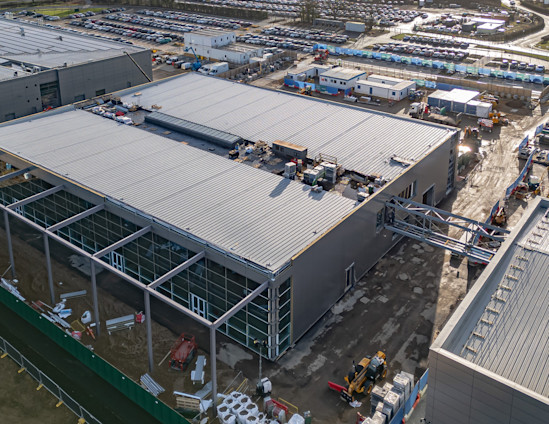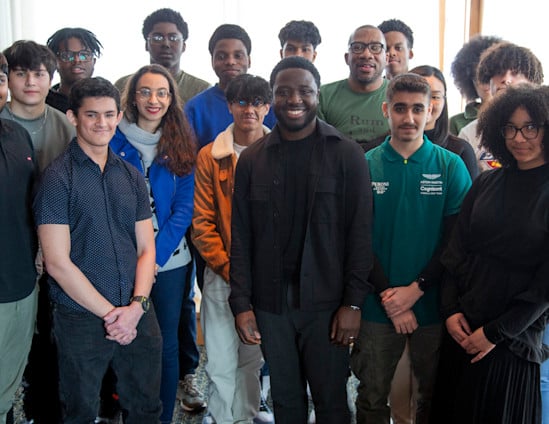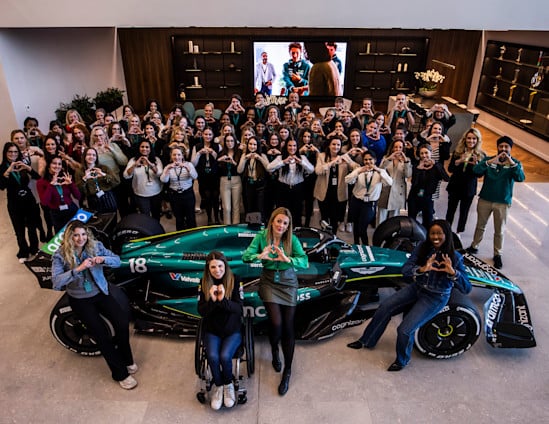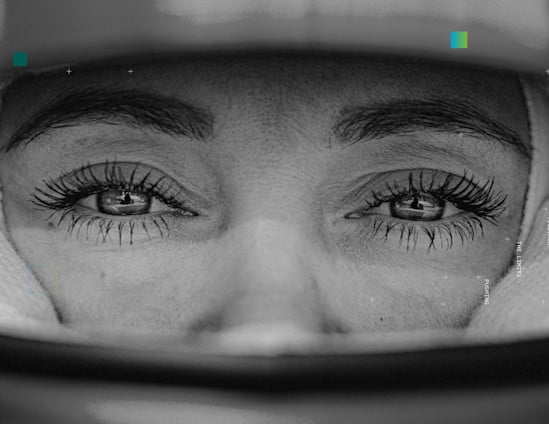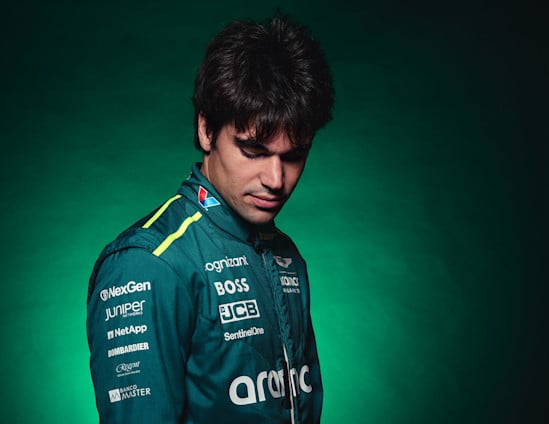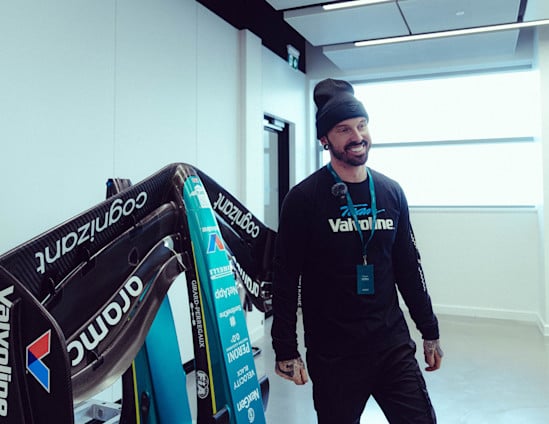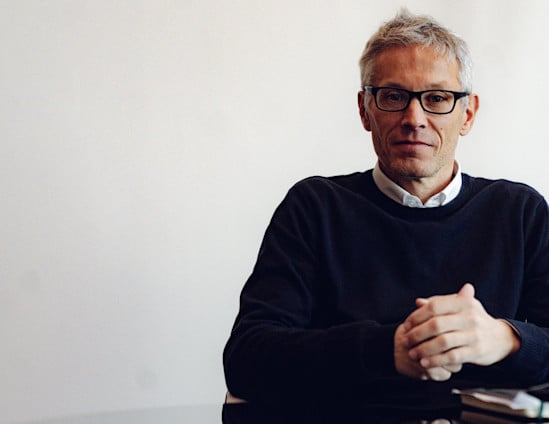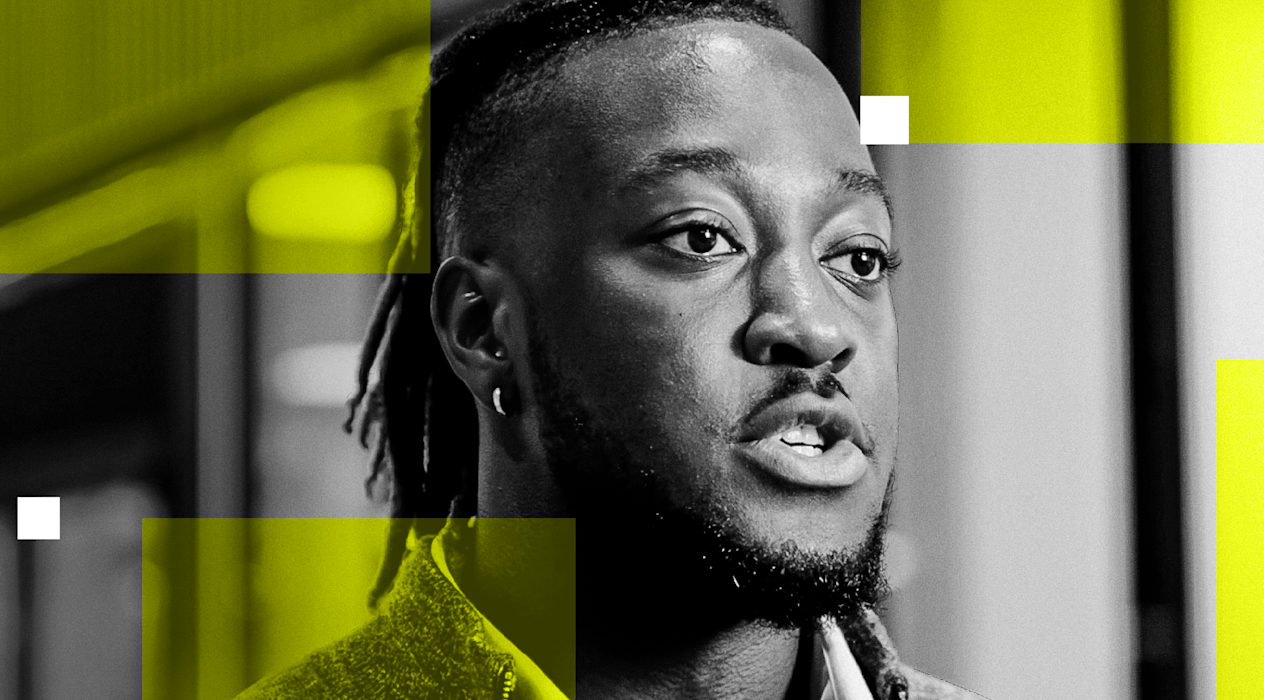
Intense, innovative, and ultimately inspiring. Inem Coker lifts the lid on his role with the team, what it takes to be an Aero Design Engineer, and his journey to Formula One.
Aerodynamics, how the surfaces of an F1 car flow and how they generate the forces that keep the car glued to the track have always been important, but in F1's latest ground effect guise the efficiency of those aerodynamic surfaces and structures has become even more crucial.
It takes a team of highly skilled engineers working across a variety of areas to create the aerodynamic elements that make a car go faster.
To many, a career in this field of F1 seems like an impossibly lofty target to reach but as Aston Martin Aramco Formula One Team Aero Design Engineer Inem Coker explains, all it takes is preparation, perseverance and the firm belief that anything is possible.
What does an F1 Aero Design Engineer actually do?
"An Aero Design Engineer works with the aerodynamicists, machinists and ADM (Advanced Digital Manufacturing) technicians to test wind tunnel models, which are scaled at 60 per cent. An Aero Design Engineer acts as a middleman between these groups, understanding what they want to achieve with particular parts of the car and then determining whether it's actually achievable. Beyond that, it's all about creating the models, which are tested in the wind tunnel."

You're working on something that keeps evolving, keeps changing and that really pushes your engineering abilities. You're working at the bleeding edge.
You need to be an excellent problem-solver
"I specialise in front and rear wings and also the front corners of the car. A lot of the work is iterative because challenges often arise during the design process, the assembly process and the post-test process – you're constantly tweaking and refining. Being a good Aero Design Engineer requires excellent problem-solving skills – and problem-prevention skills. Predicting that a problem is going to occur before it actually occurs saves you so much time in the long run."
You're constantly iterating
"The speed of iteration is one of the biggest draws. You're working on something that keeps evolving, keeps changing and that really pushes your engineering abilities. You're working at the bleeding edge and always looking for ways to improve the performance of the car.
"When I did my aerospace degree, I worked on a lot of planes and I soon realised that 50 years ago planes looked exactly as they do now, but an F1 car from even just two years ago looks very different from the latest F1 cars."
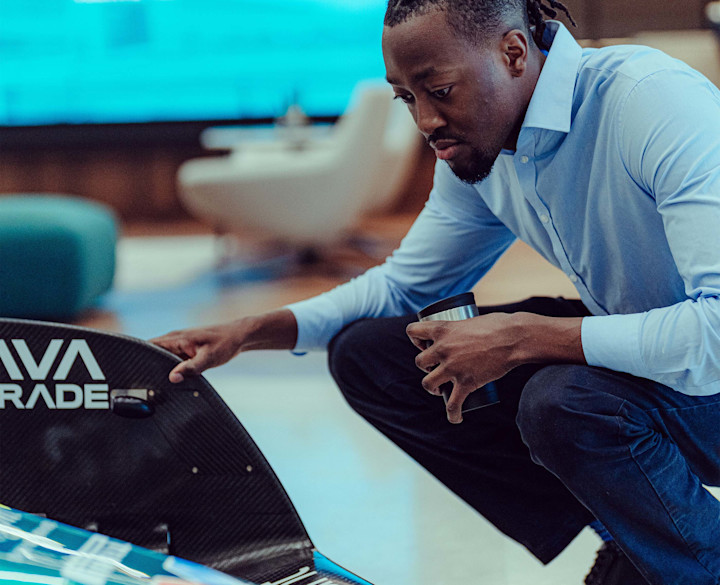
Watching a Grand Prix and knowing that the work you've done has had an impact on the performance of the car is one of the most exciting aspects of working in an F1 team.
It's a specialised role but you feel connected to the racing
"There's a real connection between the CAD (Computer Aided Design) work, the wind tunnel models and all the testing you do, and then seeing the parts on the track. When you're sitting at a CAD station it's easy to lose perspective, so being able to see the results in person, making that effort to go down to the wind tunnel, or down to model build really keeps you connected and it's exciting to see your work physically come to life."
It's hugely rewarding
"You get a lot of excitement from seeing something you've designed ending up on the track. You can point out parts of the car and say, 'Yeah, I worked on that flap, or that rollover.' Watching a Grand Prix and knowing that the work you've done has had an impact on the performance of the car is one of the most exciting aspects of working in a Formula One team."
STEM subjects are key
"STEM subjects, such as physics and maths, are important for most engineering roles and that is certainly the case for the role of aero model designer. Most Aero Design Engineers study mechanical engineering, automotive engineering or motorsport engineering.
"I took a slightly different approach because I studied aerospace engineering, but much of what you learn on an aerospace engineering course is transferable to the work we do in Formula One – the fundamental principles are the same.
"I've been passionate about motorsport from a young age. I started karting and when I was a little kid and raced all over the country. I raced against a couple of current F1 drivers like Lando Norris and Zhou Guanyu, but you reach a certain point where you need more funding and I didn't have that – that's when I switched my focus to studying subjects that could get me into the sport on the engineering side.
"When it came to choosing my courses at college, I chose physics and maths-based subjects. It gave me a good grounding for studying engineering, along with all my experience of racing and working as a mechanic on my karts."
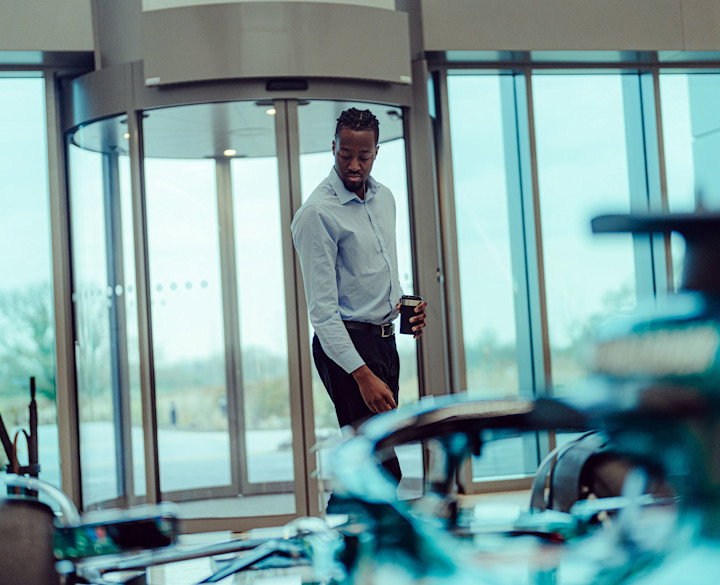
I had so many setbacks. I applied for all the work experience and placement opportunities at the teams and didn't get any. Even when I was trying to volunteer, I was struggling to get experience.
Experience counts
"Work experience will help you stand out from other applicants. There might be thousands of applicants with the same degree as you, so any work experience or examples of how you've shown your passion can help set you apart.
"It doesn't necessarily need to be a paid role. Volunteering is a great way to gain experience and demonstrate your interest. It could be volunteering at your local kart track. It doesn't even necessarily need to be in the motorsport industry, any kind of volunteering in the engineering space can help you gain practical experience."
You mustn't be afraid of rejection
"It's unlikely you will walk straight out of education into a role with an F1 team. The likelihood is you will get knockbacks, but you have to keep your head up, keep working hard, and believe in yourself. If you're passionate enough, if you really want it, eventually, you will make it.
"I had so many setbacks. I stopped racing, that was a setback. I applied for all the work experience and placement opportunities at the teams and didn't get any. Even when I was trying to volunteer, I was struggling to get experience.
"When you do eventually make it to F1, it makes it all worthwhile though."
So, you want to be an Aero Design Engineer?
Preparation, perseverance and the firm belief that anything is possible. Inem Coker lifts the lid on his role with the team, what it takes to be an Aero Design Engineer, and his journey to F1.
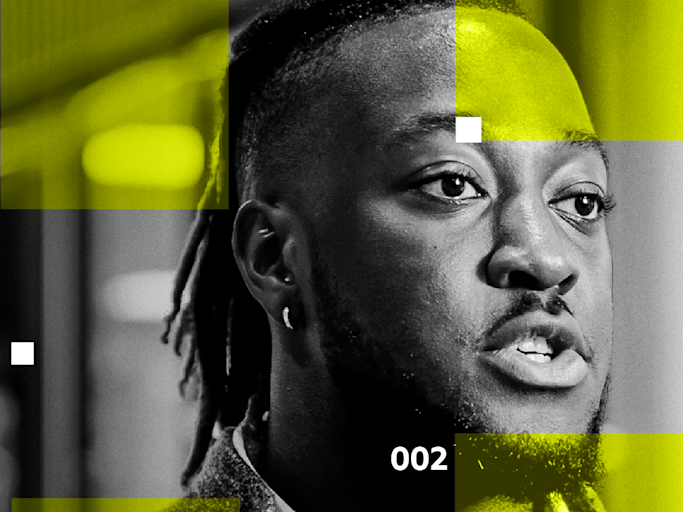
It's intense
"One of the most challenging aspects of working in Formula One is the intensity. You need to be focused – you have to be on it every single day. The sport moves at a breathless pace. If you stand still, you go backwards. You have to keep pushing. That relentless pursuit of progress means you become immersed in your role very quickly – and as someone who loves the sport, that's something I really enjoy."
There is more than one way to solve a problem
"The role of Aero Design Engineer is dynamic, varied and engaging because you're frequently presented with challenges to overcome and problems to solve. You quickly learn that there is rarely ever only one way to solve a problem.
"There are different approaches, different interpretations. Diversity of thought drives creativity and innovation, and it increases the ability to identify a range of solutions and ultimately find the best one.
"If everyone is from the same background, and they've had the same upbringing, then the likelihood is that everyone is going to think the same way – you may find a solution, but it may not be the best one.
"Growing up, seeing Lewis Hamilton on the track, gave me someone to aspire to be like, but off the track, on the engineering side, the sport needs greater diversity in terms of role models, so young people can see people they feel represent them. If you can't see it, you can't be it.
"I was fortunate that my parents were very supportive, and I never doubted that I could make it into F1. I hope that young engineers might see me and be inspired to pursue a career in the sport. The sport is making positive steps towards increasing diversity, there is still plenty of progress to be made, but I'm really excited to see the next generation of engineers coming into F1."
Bring your energy and be part of the journey. With a rich heritage and a fresh perspective, we're shaking up the order and determined to compete at the sharp end.
Talented. Passionate. Driven. Our people are what set us apart and, together, we're changing the game on and off the track.
Discover the roles we're recruiting for at Aston Martin Aramco Formula One Team and make your next career move.

Amplify your fan experience
From exclusive collabs to once-in-a-lifetime prizes, I / AM DROPS is a new series of unique and ultra-limited moments and fan experiences.
Sign up for I / AM or sign in to unlock.



